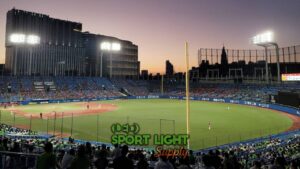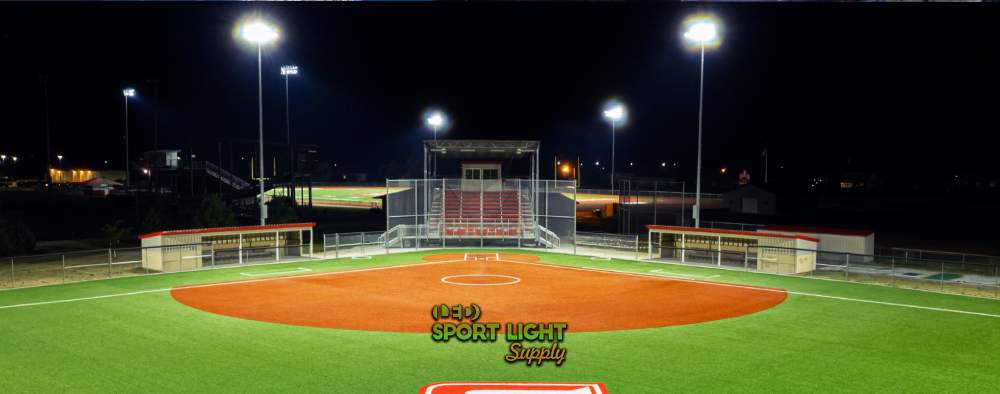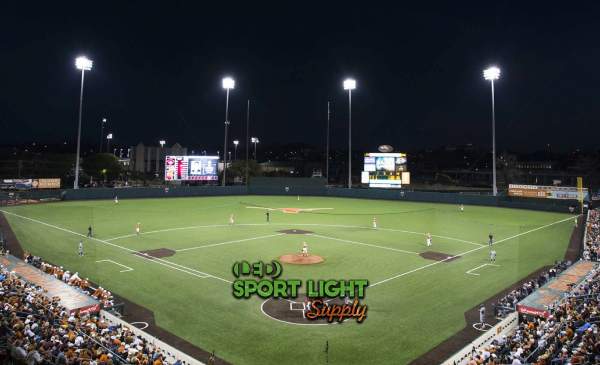
While traditional lighting systems, such as metal halide or high-pressure sodium lamps, have been widely used, advancements in LED technology are changing the landscape of sports lighting. Baseball field owners and managers are increasingly opting for LED lights, attracted by their efficiency, long lifespan, and potential for reducing overall operational costs. This analysis explores the installation, long-term operational expenses, and total cost of ownership involved in choosing LED lights over traditional lighting options, demonstrating how LED lighting can be both a practical and financially sound investment for baseball fields.
| Lighting Component | Traditional Lighting | LED Lighting |
|---|---|---|
| Initial Installation Cost | ||
| Fixtures (per unit) | $1,000 – $1,500 | $1,000 – $2,000 |
| Poles and Mounting | $5,000 – $10,000 | $5,000 – $10,000 |
| Wiring and Electrical Work | $10,000 – $20,000 | $10,000 – $20,000 |
| Installation Labor | $10,000 – $15,000 | $10,000 – $15,000 |
| Total Initial Cost | $80,000 – $150,000 | $70,000 – $120,000 |
| Annual Operating Costs | ||
| Energy Consumption (kWh/year) | 120,000 kWh | 60,000 kWh |
| Energy Cost | $12,000 | $6,000 |
| Maintenance | $5,000 – $8,000 | $1,000 – $2,000 |
| Total Annual Cost | $17,000 – $20,000 | $7,000 – $8,000 |
| Total Cost Over 10 Years | $200,000 – $300,000 | $150,000 – $200,000 |
Table of Contents
Toggle
Installing lighting on a baseball field involves more than just selecting and mounting lights. Several components come together to ensure proper lighting coverage, safety, and longevity. These components include the lighting fixtures themselves, the poles, wiring, and the cost of labor to install everything. Each element contributes to the overall cost, and while traditional lighting options remain popular, LEDs have gained traction for their promising performance and cost-saving benefits.
For a standard baseball field, installing LED lights generally costs between $70,000 and $120,000. This estimate encompasses high-quality LED fixtures, which range in price from $1,000 to $2,000 each, depending on wattage and other technical specifications. LEDs require fewer fixtures to achieve the same brightness as traditional systems, which translates to potential savings in the quantity of fixtures required, as well as their installation.
Traditional lighting systems, which include options like metal halide and high-pressure sodium lights, can be more costly upfront, with installation expenses ranging between $80,000 and $150,000. This price difference arises from the higher number of fixtures often required to reach optimal brightness levels, as well as the cost of each individual fixture. Traditional lighting systems may initially appear to be competitive in terms of price, but their energy inefficiency and shorter lifespan add to long-term costs.
LED lighting offers options for customization, allowing field managers to select wattage and specifications that best meet their field’s needs. Although LED fixtures come with a higher upfront price than traditional systems, their efficiency translates into fewer fixtures and, ultimately, reduced installation and maintenance costs. These advantages make LED lights particularly suitable for fields aiming to enhance their lighting quality while also optimizing budget allocations.
 Long-term operational expenses form a significant portion of a field’s budget, especially when it comes to energy consumption. One of the primary benefits of LED lighting is its energy efficiency. LED lights consume up to 50% less energy compared to traditional lighting options. For a baseball field that would typically use around 120,000 kWh annually with traditional lights, switching to LEDs can reduce this usage to about 60,000 kWh. With the average electricity rate at $0.10 per kWh, this results in an annual savings of roughly $6,000.
Long-term operational expenses form a significant portion of a field’s budget, especially when it comes to energy consumption. One of the primary benefits of LED lighting is its energy efficiency. LED lights consume up to 50% less energy compared to traditional lighting options. For a baseball field that would typically use around 120,000 kWh annually with traditional lights, switching to LEDs can reduce this usage to about 60,000 kWh. With the average electricity rate at $0.10 per kWh, this results in an annual savings of roughly $6,000.
Over several years, these savings accumulate, making a substantial impact on the field’s overall operational expenses. By consuming less electricity, LED lights not only save money but also reduce the environmental impact of the field’s energy use. This aligns well with modern initiatives to make sports facilities more sustainable.
Maintenance represents another significant operational expense for baseball field lighting systems. LED lights have a much longer lifespan, generally lasting between 50,000 and 100,000 hours. In contrast, traditional lights like metal halide bulbs require replacement after 10,000 to 20,000 hours of usage. This difference translates to fewer replacements and thus lower maintenance labor costs for fields utilizing LED lights.
With traditional lighting, the frequency of bulb replacements is far greater. Typically, fields with metal halide lights need to replace bulbs every 2-3 years, incurring both material and labor costs. On the other hand, LED lights’ extended lifespan minimizes the need for such frequent replacements, enhancing efficiency and lowering overall maintenance expenses. Reduced maintenance demands also mean fewer disruptions to field use and scheduling, which is beneficial for leagues and teams relying on consistent field availability.
The operational efficiency of LED lighting extends beyond cost savings. LEDs deliver uniform brightness and require minimal warm-up time, providing instant illumination for games and practice sessions. This feature is particularly useful for fields with high-frequency usage, where any delay in lighting could disrupt schedules and diminish the overall player experience. With LEDs, field managers can ensure consistent, high-quality lighting with fewer interruptions or delays, leading to smoother operations and a better experience for players and spectators alike.
Assessing the total cost of ownership for baseball field lighting over a decade reveals the financial benefits of investing in LED technology. When factoring in both installation and operational expenses, fields equipped with traditional lighting systems may face a total cost ranging from $200,000 to $300,000 over a ten-year period. This figure includes not only the initial installation but also ongoing energy and maintenance expenses.
In contrast, a baseball field with LED lighting typically incurs a total cost between $150,000 and $200,000 over the same period. This reduced cost is largely due to the lower energy consumption and maintenance requirements associated with LED lights. While the initial cost of LEDs may be higher, the ongoing savings quickly offset the initial investment, making LEDs a cost-effective option for long-term lighting needs.
Beyond the financial aspects, LED lighting offers additional benefits that enhance its value. Improved visibility and consistent lighting quality contribute to a safer environment for players and spectators. LEDs provide uniform illumination, reducing shadows and creating better conditions for players to track the ball and for officials to oversee the game. This improvement in lighting quality can lead to fewer on-field accidents and enhanced player performance, a significant factor for both community leagues and professional teams.
The reliability of LED lights also minimizes the likelihood of unexpected outages, which can disrupt games and create scheduling issues. Traditional lighting systems, especially as they age, are prone to inconsistent performance and may require emergency repairs. LEDs, with their longer lifespan and consistent brightness, offer an additional layer of reliability that translates into operational convenience and overall value for field managers and users alike.
Investing in LED lighting provides an attractive return on investment, especially given the relatively short payback period. Typically, the initial investment in LED lighting is recovered within 3 to 5 years, depending on factors such as usage frequency and local energy rates. After this period, the cost savings from reduced energy consumption and lower maintenance demands contribute directly to the field’s financial return, enabling field operators to allocate funds toward other enhancements or programs.
This positive return on investment highlights LED lighting as a financially sound choice for baseball fields aiming to balance upfront costs with long-term savings. By the time the initial costs are recovered, the ongoing financial benefits make LEDs a sustainable and economically viable solution.
LED lights offer additional value by supporting environmental sustainability. Their reduced energy consumption lowers a field’s carbon footprint, aligning with modern goals for greener sports facilities. Fields that switch to LED lighting contribute to lower overall energy demand, which can play a role in reducing the environmental impact of community and professional sports venues alike. As sports organizations increasingly prioritize sustainability, LED lighting helps meet these goals while simultaneously delivering economic advantages.
Selecting the right lighting system for a baseball field involves careful consideration of installation costs, long-term operational expenses, and the total cost of ownership. LED lighting, while requiring a higher initial investment, presents numerous advantages in terms of energy efficiency, reduced maintenance needs, and enhanced lighting quality. Over a 10-year period, fields equipped with LED lights can realize substantial cost savings compared to those with traditional lighting systems, resulting in an attractive return on investment. Additionally, LED lighting supports sustainability efforts, making it an environmentally responsible choice for modern sports facilities. With these combined benefits, LED lighting stands out as a smart and forward-thinking investment for baseball fields, enhancing both their financial and operational efficiency for years to come.
Drop us a line to receive a free lighting design